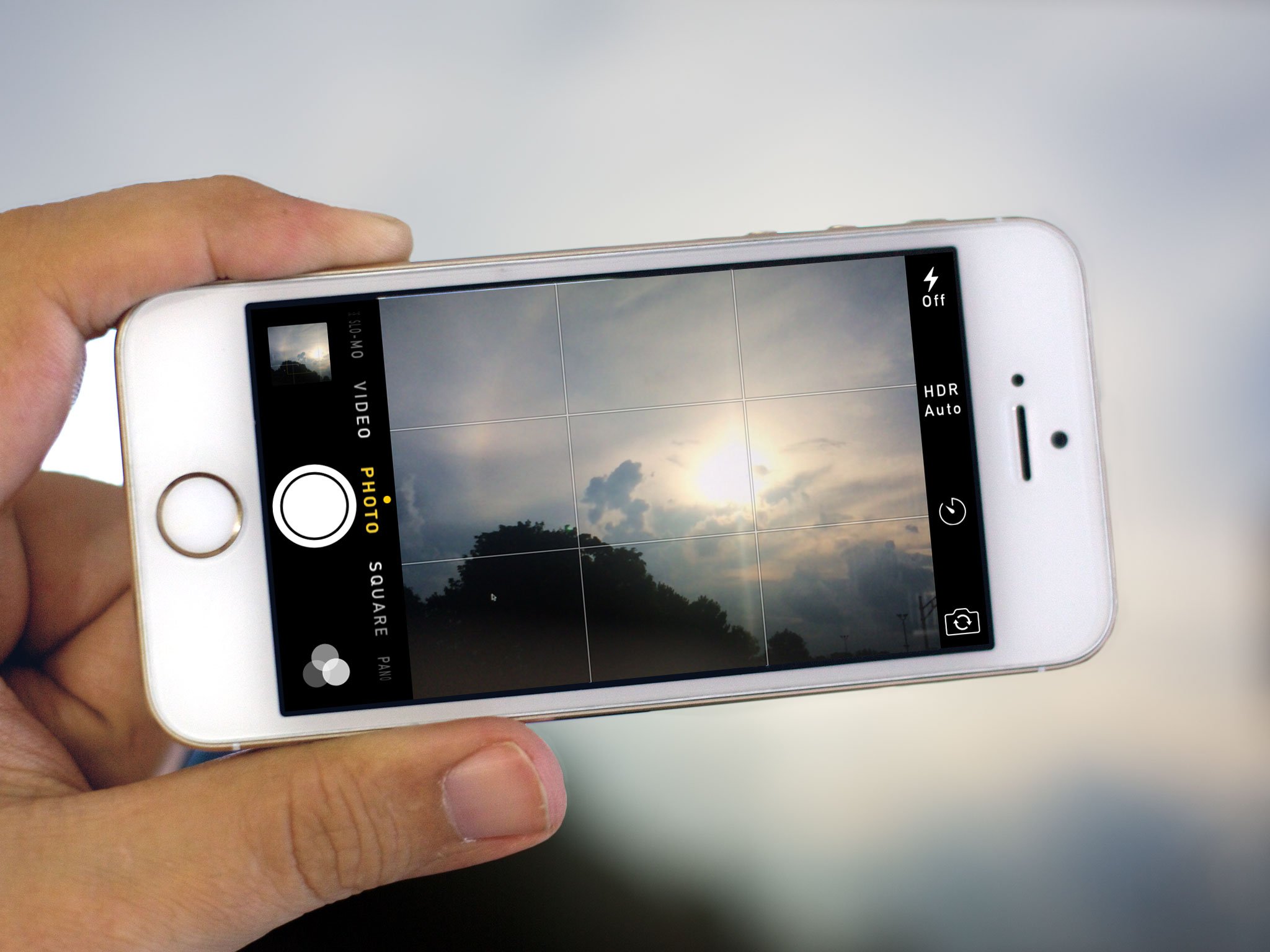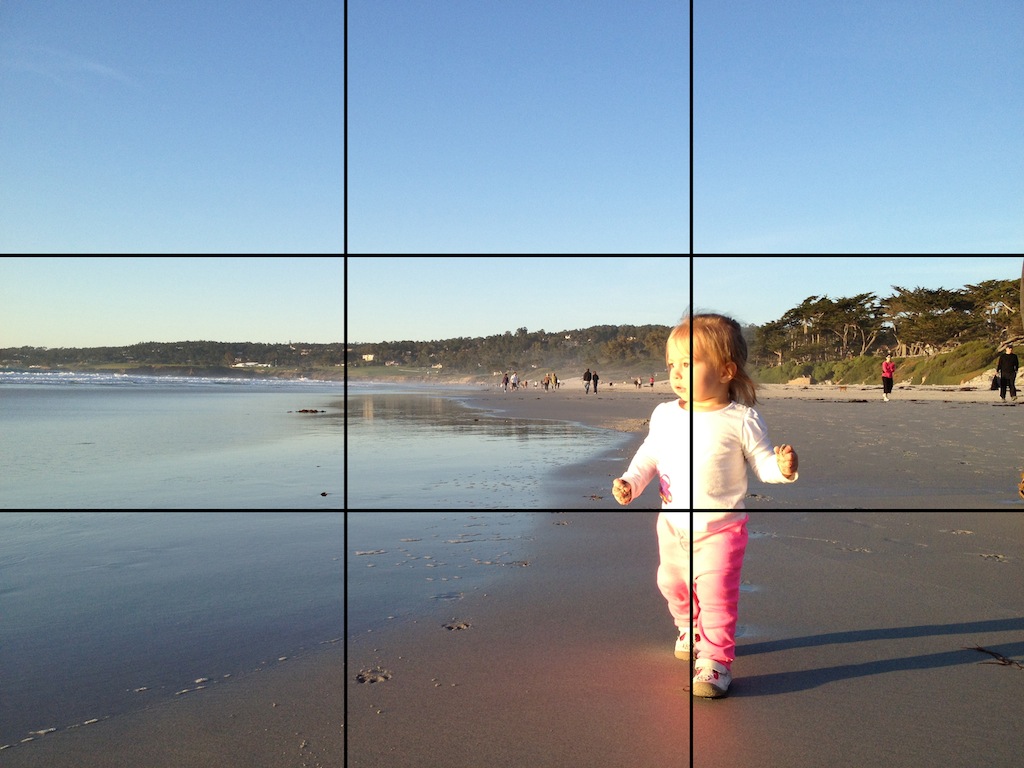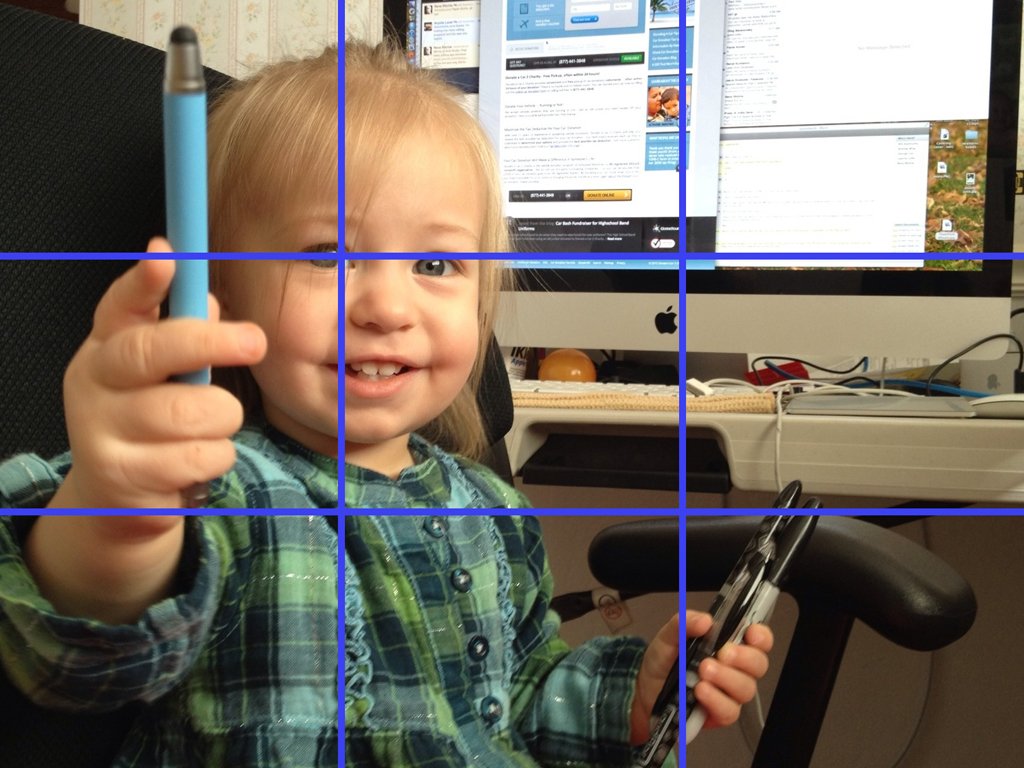How to use the 'rule of thirds' to take more striking photos with your iPhone

The iPhone has often been called the "best camera" because it's the one most of us have with us most of the time. But it takes more than just a great camera or lens to produce great photography. One of the most important, yet most difficult, elements in creating great photographs is composition - where your subject is placed and how it's related to its surroundings. A great starting point for developing composition is to understand the rule of "thirds".
Note: If you're using an iPod touch or iPad, the concepts and methods are all the same, so please follow along as well!
What is the rule of thirds?

Take a close look at the vertical lines in the image above. These two lines divide the image into thirds. Similarly, there are lines that divide the photo horizontally in thirds. Together, these lines form a grid over the photo and divide the image into 9 equal parts. The rule of thirds is simply a guideline that states that a photo is compositionally more interesting if the important elements of the image lie on one of the grid lines or their intersections. In the above photo, I have placed my daughter on the far right vertical line.
How to enable the camera grid on your iPhone

Luckily, the iPhone has the option to turn on this grid so that you don't have to estimate where the lines fall while taking your photo. Until you feel comfortable with your ability of using the rule of thirds, I recommend leaving the grid turned on.
- How to enable the camera grid on your iPhone or iPad
Landscapes and horizons

When photographing landscapes, it's important to make sure the horizon is not in the dead center of your photo because it is compositionally boring. Using the rule of thirds on the horizon will instantly improve your results. Make sure the more interesting piece, the sky or earth, is what makes up two thirds of your photo. In the example above, I chose to highlight the sky. Notice that I used the rule of thirds twice, both on the horizon and sun. I decided to change things up a little in this next photo.

After taking a few photos with the horizon on the bottom third of the frame and the sun on the left grid line, I wasn't too thrilled with the results and felt my pictures were a little bland. The sky wasn't particularly interesting on this day and there wasn't anything that made my photos special. So instead of making the predictable decision with the horizon on one of my horizontal lines, I placed the sun on the bottom grid line. In fact, in the above image, the sun lies on the intersection of the bottom and left grid lines. By pure luck, a bird decided to fly into the frame and I waited until he was flying past my right grid line to snap the photo. These two changes suddenly made this photo a lot more interesting.
I made a simliar decision for the following photo.
Master your iPhone in minutes
iMore offers spot-on advice and guidance from our team of experts, with decades of Apple device experience to lean on. Learn more with iMore!

When taking photos of sunsets, it's alway more interesting to involve a silhouette, so that's what I decided to do with this tree. Most of the time, you would want your silhouette to fall on one of the grid lines, but it wasn't working with this tree -- there was something awkward about it. So, instead, I decided to use the rule of thirds on the sun. Again, it's lying on the intersection of the bottom and left grid lines and the photo came out great.
Portraits

The important element of just about every portrait is your subject's eyes, so make sure the eyes fall on one or more of the grid lines. When shooting in portrait orientation, you may want to center the subject with the top grid line passing through your subject's eyes. When shooting in landscape orientation, take advantage of both horizontal and vertical grid lines by placing one of your subjects eyes on the intersection of two grid lines.
Rules are meant to be broken

Keep in mind that this so-called rule is only a guideline and does not need to be followed to a tee. For example, if there is a lot of symmetry in your scene you may want to highlight the symmetry by centering your subject. Or perhaps moving your subject even further off center will have a greater impact and improve your photo. Be creative and don't limit yourself.
Now go out and shoot!
Now that you know how to use the rule of thirds, here's your first assignment: go out and practice. Turn on the iPhone camera's grid and shoot, shoot, and shoot some more. Then head over to the Photography Forums, ask questions if you have them, and share the great shots you got demonstrating the rule of thirds. Go!
We can't wait to see them!
How to learn more about iPhone photography
Former app and photography editor at iMore, Leanna has since moved on to other endeavors. Mother, wife, mathamagician, even though she no longer writes for iMore you can still follow her on Twitter @llofte.

